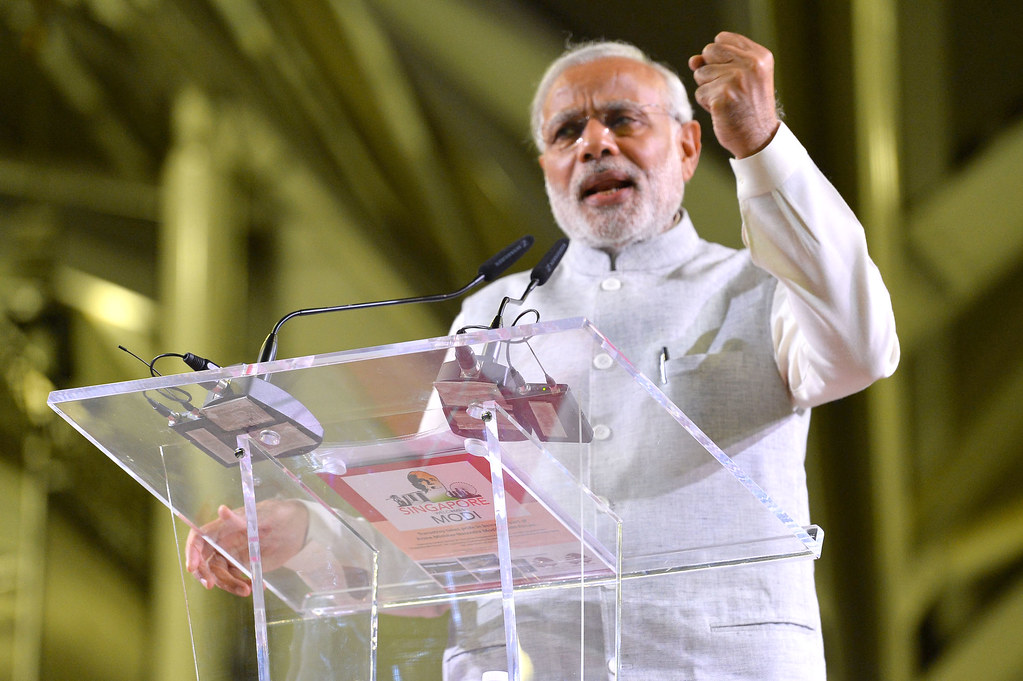Instead of further liberalisation of agriculture, state intervention for better pricing, investments in water harvesting and an agroecological transition could ensure a more resilient system to weather shocks like the current one.
In rural India, the COVID-related economic crisis should be addressed as a priority, not only because of its social dimension but also because of the need for structural reforms this crisis is revealing. However, the reforms announced by the Narendra Modi government are not necessarily the right ones.
Farming in India has been made economically unviable due to the post-1991 policies. The priority, since then, has been given to industry as well as services. Middle-class consumers have been pampered by successive governments at the expense of farmers, who could not sell their crops at a fair price anymore. This unprecedented neglect of the agricultural sector has resulted in an equally unprecedented gap between the standard of living in the rural and urban parts of the country. While under UPA 2, the urban/rural ratio, in terms of monthly per capita expenditures, was reduced for the first time since 1974, it has jumped from 1.84 to 2.42 between 2012 and 2018. This means that an average urban-dweller today can consume almost 2.5 times more than an average person in a village.
In this context, the Modi government has decided to liberalise India’s agriculture by amending the Agricultural Produce Marketing Committee (APMC) Act and the Essential Commodities Act to deregulate trading practices in agricultural markets (mandis). Peasants will be allowed to sell their products wherever it is valuable for them and barriers to inter-state trade in agriculture will be lifted. Contract farming will also be introduced in such a way that the buyer can assure a price to the farmer at the time of sowing. This has been touted as the “1991 moment” for the agriculture sector.
The main argument against the APMC Act is that it does not allow the free market to function due to government intervention, thereby denying farmers the opportunity to determine the prices of crops in the marketplace. In theory, this is a valid argument. But as the High-Level Committee headed by Shanta Kumar observed in 2015, only 6 per cent of farmers get the Minimum Support Price (MSP) — 94 per cent already face the whims of the market. This is because of barriers to access for farmers as only 22 crops are procured under MSP. Infrastructure is also inadequate, there are only an estimated 7,000 APMC mandis across India, and procurement depends on the stocks required by the state.
The APMC Act is not the main problem. On the contrary, it has historically been part of the solution — like state intervention in general. Farm pricing is a case in point. The Agricultural Prices Commission (APC) that was established in 1965 gradually included the living costs of farmers to assess the terms of trade between agriculture and industry while determining agricultural pricing. The Commission for Agricultural Costs and Prices (CACP) that replaced the APC in 1985 added a 10 per cent mark-up over the MSP to account for entrepreneurial costs. It helped to contain the urban/rural divide. Such practices have been gradually eroded post-1991. The problem, therefore, is not state intervention but the way the government deals with agriculture.
Second, the APMC Act helped India to build up food stocks — part of which, incidentally, should be distributed today. As of June, the Food Corporation of India (FCI) had 832.69 lakh tonnes of rice and wheat in stock, the most since 2005. India managed to weather the 2008 global food crisis only because it had enough food stocks as Indian agriculture was not linked to the international futures market. This was possible due to the procurement done through the APMC Act.
Third, the APMC Act has already been reformed to a great extent. Since agriculture is a state subject, the Act has been modified in 17 states. Some of the initiatives include Uzhavar Sandhai in Tamil Nadu, the Rythu Bazaar in Andhra Pradesh and Telangana, the Apni Mandi in Punjab, the Raitha Santhe in Karnataka and the Krushak Bazaar in Odisha. Therefore, it is incorrect to describe the APMC Act as an impediment in alleviating rural distress. On the contrary, the condition of peasants has often been affected when the APMC Act has been diluted. Bihar is a case in point: The APMC Act was revoked in 2006 with the same rationale that further deregulation will attract private investment in infrastructure. Not only has that not materialised, but the existing APMC market infrastructure was also dismantled. As the economist Himanshu pointed out, reforms have “led to proliferation of private unregulated markets which charge a market fee from traders as well as farmers, and without any infrastructure for weighing, sorting, grading and storage”.
While the reforms announced by the Modi government are not the right ones, Indian agriculture does need real reforms. First, it is still too heavily subsidised in favour of the big players. In the Union Budget 2019-20, the allocation for the Ministry of Agriculture was Rs 1,30,485 crore and the fertiliser subsidy alone was estimated at Rs 79,996 crore. However, these subsidies are concentrated on a few crops. As the agriculture economist Bruno Dorin has shown, only three crops receive more than 60 per cent of the so-called “non-product-specific” support to agriculture — rice, wheat and sugarcane, whose market prices are consequently more attractive and competitive. This has led to environmental degradation like the depletion of groundwater levels and monocultures which are a threat to biodiversity. It has also led to the industrialisation of agriculture, that results in the strengthening of a handful of multinational companies, which supply chemical inputs. Liberalisation would only strengthen the role of large companies — including those in the agri-food sector.
Structurally, farming needs to be made economically and ecologically viable in India. Instead of further liberalisation of agriculture, state intervention for better pricing, investments in water harvesting and an agroecological transition could ensure a more resilient system to weather shocks like the current one. After all, the present migrant workers’ crisis has shown that peasants could not/did not want to stay in rural India. The magnitude of the problem may worsen if these workers have to continue living in their villages.
To make India’s agriculture sustainable, the government could draw inspiration from the Andhra Pradesh Community Managed Farming model, which promotes agroecological principles with the use of locally-produced, ecologically-sustainable inputs focusing on soil health, instead of depending on chemical fertilisers. Since the agro-ecological system of farming is more biodiverse in nature, it will make the system more resilient overall and provide a safety net for farmers in case of crop damage due to various factors such as climate change or droughts.
By investing again in agriculture and following, at last, the recommendations of the M S Swaminathan Committee, the Government of India would also help bridge the drastic urban-rural divide — something the MGNREGA had contributed to under UPA 1 and 2. These structural reforms would represent for farmers what the MGNREGA has been for landless peasants — who would most probably benefit from these reforms as well.
Source: https://bit.ly/3hFFpNT




